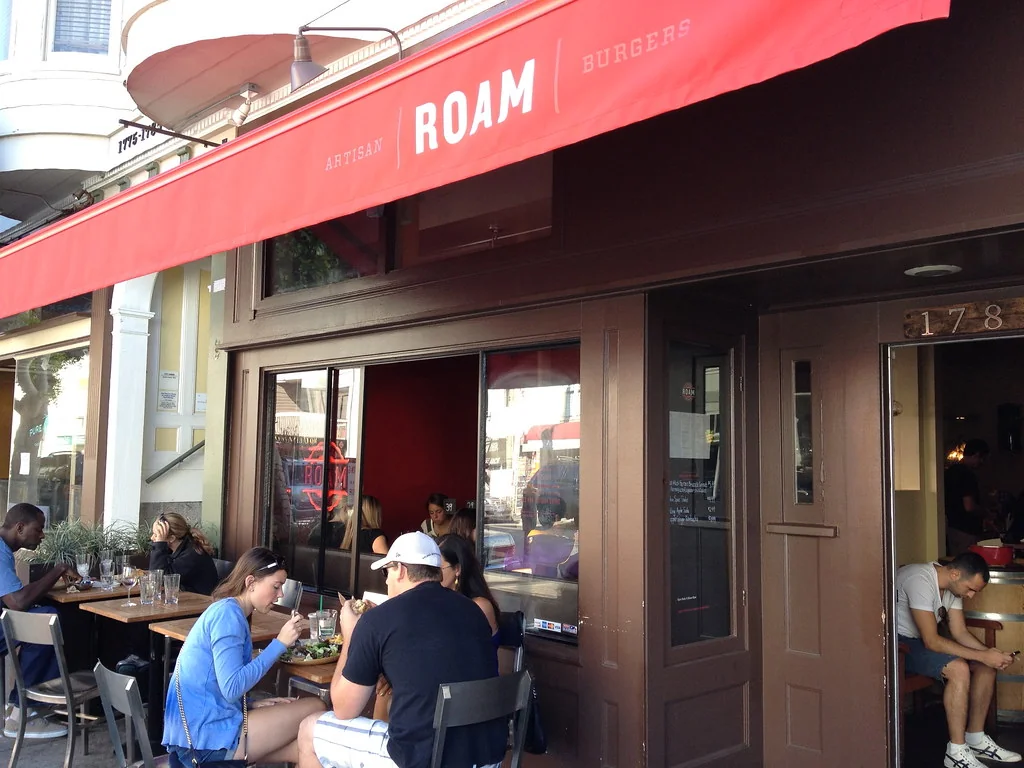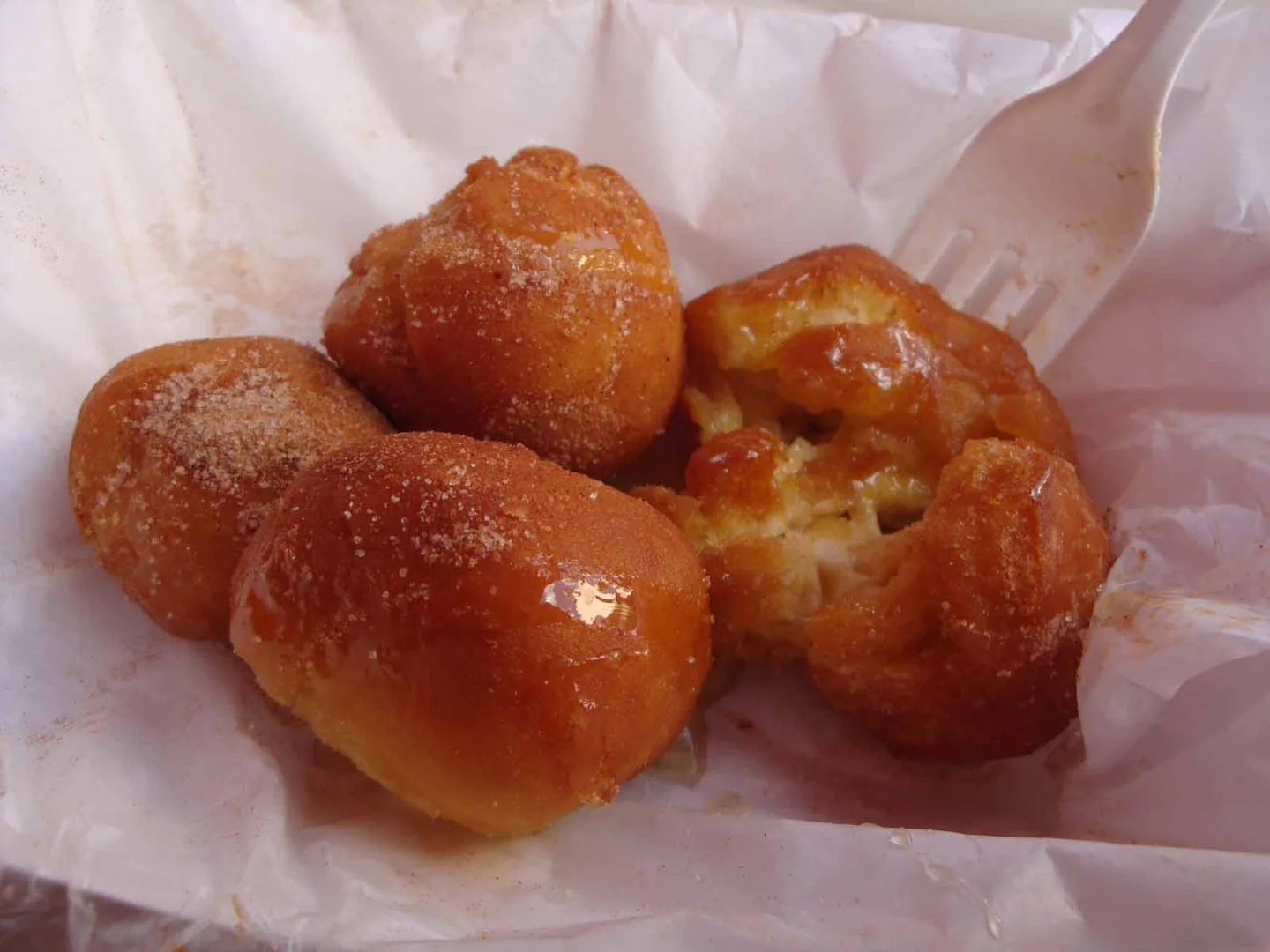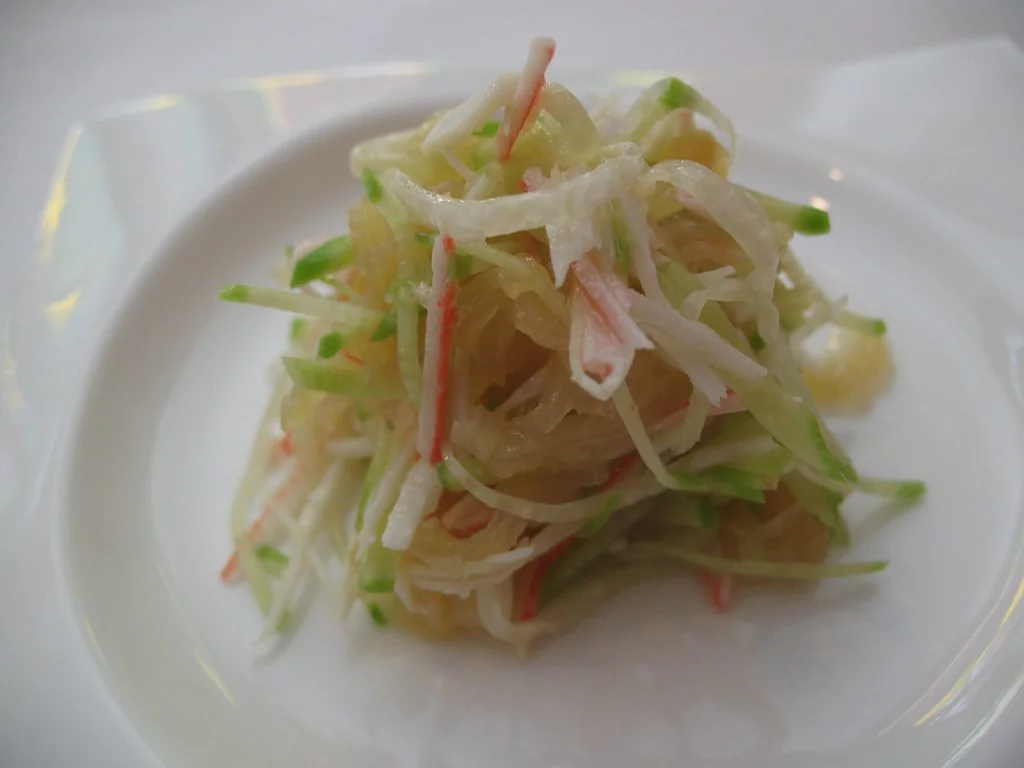12 Weird Foods and Unusual Dishes from California
Complete guide to 12 weird foods and unusual dishes from california. Detailed information, recommendations, and everything you need to know

California's culinary landscape stretches far beyond farm-to-table restaurants and wine country sophistication. Scattered across the Golden State, adventurous food enthusiasts discover a wonderland of bizarre delicacies that challenge every preconceived notion about California cuisine. From cricket flour protein bars birthed in Berkeley labs to scorpion-studded lollipops manufactured in Silicon Valley, these unusual dishes reflect the state's spirit of innovation and cultural diversity. The same entrepreneurial energy that drives tech startups also fuels culinary experiments involving insects, exotic meats, and ingredients most people wouldn't dream of eating. This gastronomic adventure reveals how California's willingness to push boundaries extends into every corner of food culture, creating experiences that range from surprisingly delicious to utterly shocking.
Gilroy's Garlic Ice Cream Festival - Sample garlic-flavored ice cream and garlic chocolate at this annual festival celebrating the "Garlic Capital of the World"
Every July, the small agricultural town of Gilroy transforms into a pungent paradise where garlic ice cream becomes the star attraction. The Gilroy Garlic Festival, running since 1979, showcases the most unexpected applications of the "stinking rose," with vendors serving up scoops of creamy vanilla ice cream infused with roasted garlic cloves. The surprisingly sweet and savory combination creates a complex flavor profile that initially confuses taste buds before delivering an oddly satisfying finish.
Local ice cream artisans perfect their recipes throughout the year, experimenting with different garlic varieties and roasting techniques to achieve the ideal balance. The key lies in using roasted rather than raw garlic, which mellows the harsh bite while preserving the distinctive aroma. Visitors often describe the first taste as jarring, followed by curiosity, then genuine appreciation for the unexpected harmony between sweet cream and caramelized garlic notes.
The festival expands beyond ice cream to include garlic chocolate truffles, garlic-infused olive oil tastings, and even garlic wine. Local chocolatiers craft dark chocolate bonbons filled with garlic ganache, creating desserts that pair surprisingly well with local wines. The garlic chocolate typically features a subtle garlic essence that emerges gradually, avoiding the overwhelming punch that might ruin the chocolate experience.
Festival attendance regularly exceeds 100,000 people over three days, with the garlic ice cream booth maintaining the longest lines. Smart visitors arrive early in the morning when temperatures are cooler and crowds thinner. The festival typically occurs during the last weekend of July, though dates occasionally shift based on the garlic harvest schedule. Parking becomes extremely challenging, so organizers strongly recommend using the free shuttle service from remote lots located several miles away.
San Francisco's Crocodile Meat Burgers at Roam Artisan Burgers - Experience exotic crocodile patties served with California-grown avocado and sprouts
Roam Artisan Burgers elevated the concept of alternative proteins by introducing American alligator meat to their rotating selection of unusual burger options. The crocodile meat, sourced from sustainable farms in Louisiana, arrives in San Francisco as frozen patties that undergo careful preparation to preserve the meat's unique characteristics. Crocodile meat tastes remarkably similar to chicken but with a denser texture that holds together beautifully when formed into burger patties.
The preparation process requires precise timing since crocodile meat can quickly become tough and chewy when overcooked. Roam's chefs discovered that a medium-rare preparation yields the best results, maintaining the meat's natural tenderness while ensuring food safety through proper handling techniques. The patties receive minimal seasoning to highlight the meat's subtle flavor, which many diners describe as a cross between chicken and fish with a slightly gamey undertone.
California-grown avocado and locally sourced sprouts complement the exotic protein perfectly, adding familiar flavors that ease diners into the unusual experience. The avocado's creamy richness balances the lean crocodile meat, while fresh sprouts provide textural contrast and a clean, green finish. Roam typically serves the crocodile burger on their signature brioche bun with a side of their famous rosemary fries.
The crocodile burger appears on Roam's menu sporadically, usually when they receive fresh shipments from their Louisiana supplier. Regular customers learn to follow Roam's social media accounts for announcements about exotic protein availability. The Valencia Street location tends to feature unusual options more frequently than their suburban outposts, making it the best bet for adventurous diners. Prices typically run about $18-22 for the crocodile burger, reflecting the premium cost of sourcing exotic meats. Reservations aren't accepted, but the wait rarely exceeds 30 minutes except during peak weekend hours.
Los Angeles' Escamoles "Insect Caviar" Tacos at Guelaguetza Restaurant - Taste ant larvae harvested from agave roots, considered a delicacy in Oaxacan cuisine
Guelaguetza Restaurant brings authentic Oaxacan cuisine to Los Angeles, including escamoles—the larvae of ants that nest in agave plant roots. Often called "insect caviar" due to their delicate flavor and premium price, escamoles represent one of Mexico's most prized traditional delicacies. The restaurant imports these precious larvae directly from Oaxaca, where indigenous harvesters risk ant bites to collect them from underground nests.
The harvesting process explains escamoles' astronomical cost—collectors must dig deep into rocky soil to locate ant colonies, then carefully extract the larvae while defensive ants swarm to protect their young. Each nest yields only small quantities of escamoles, and the harvesting season lasts just a few months annually. This scarcity makes escamoles more expensive per pound than many luxury ingredients, including some cuts of wagyu beef.
Guelaguetza prepares escamoles simply, typically sautéing them with butter, garlic, and epazote herb before serving in warm corn tortillas. The larvae possess a delicate, nutty flavor with subtle sweetness and a texture reminiscent of corn kernels. First-time tasters often express surprise at how pleasant escamoles taste, expecting something more challenging or off-putting. The preparation method preserves their natural flavor while adding aromatic herbs that complement rather than mask the insects' taste.
The restaurant serves escamoles seasonally, typically from March through June when fresh supplies arrive from Oaxaca. Prices fluctuate based on availability but generally range from $25-35 per serving. Guelaguetza recommends pairing escamoles with their house-made tortillas and a glass of mezcal for the most authentic experience. The Koreatown location maintains the most consistent supply of exotic ingredients, though their other locations occasionally feature escamoles during peak season. Calling ahead ensures availability since demand often exceeds supply among Los Angeles' adventurous dining community.
Berkeley's Cricket Flour Protein Bars at Bitty Foods - Try sustainable protein bars made from ground cricket flour, pioneered by UC Berkeley graduates
UC Berkeley graduates launched Bitty Foods with a mission to normalize insect consumption in Western diets, starting with cricket flour protein bars that disguise their unusual ingredient behind familiar flavors and textures. The company mills whole crickets into a fine flour that contains all nine essential amino acids, making it a complete protein source that rivals traditional animal proteins. Cricket flour provides more protein per gram than beef while requiring significantly fewer resources to produce.
The cricket flour production process begins with crickets raised on specialized farms under controlled conditions. The insects feed on organic vegetables and grains, ensuring high-quality nutrition that transfers into the final product. After harvesting, crickets undergo roasting and milling processes that eliminate any recognizable insect characteristics while preserving nutritional benefits. The resulting flour possesses a mild, nutty flavor that integrates seamlessly into baked goods and protein bars.
Bitty Foods' protein bars come in flavors like chocolate chip and peanut butter that mask any unusual tastes, making them accessible to squeamish consumers. Most people cannot detect cricket flour's presence when blind-tasting the bars, reporting flavors and textures consistent with conventional protein bars. The bars provide sustained energy release due to cricket flour's balanced amino acid profile, making them popular among athletes and fitness enthusiasts who prioritize performance over ingredient concerns.
The company operates from Berkeley facilities where visitors can schedule tours to observe the production process. These tours educate consumers about sustainable protein sources while addressing common concerns about insect consumption. Bitty Foods sells their products through Bay Area health food stores, farmers markets, and their online store. Prices typically range from $3-4 per bar, competitive with premium protein bars made from conventional ingredients. The company frequently participates in Bay Area food festivals and sustainability events, offering samples to curious consumers who might hesitate to purchase without trying first.
San Diego's Prickly Pear Cactus Pad Ice Cream at Mariscos El Pulpo - Sample ice cream made from locally foraged nopal cactus paddles with a unique tangy flavor
Mariscos El Pulpo transforms San Diego's abundant prickly pear cactus into an unusual ice cream flavor that captures the desert's essence in frozen form. The restaurant sources nopal cactus paddles from local foragers who harvest them from wild populations throughout San Diego County's backcountry. These thick, flat cactus segments require careful preparation to remove spines and glochids—tiny, nearly invisible barbed bristles that can cause significant irritation.
The preparation process involves charring cactus paddles over open flames to burn away spines, then scraping the surface clean before dicing the flesh. Fresh nopal possesses a mucilaginous quality similar to okra, creating a slightly viscous texture that some find off-putting in savory preparations but works surprisingly well in frozen desserts. The natural mucilage acts as a stabilizer, creating exceptionally smooth ice cream without requiring additional thickening agents.
Nopal ice cream delivers a complex flavor profile combining subtle tartness with green, vegetal notes reminiscent of green beans or asparagus. The natural sugars in cactus paddles provide mild sweetness that balances the tangy elements, while the overall flavor remains refreshingly light and clean. Many diners compare the taste to a cross between cucumber and lime, with earthy undertones that reflect the desert environment where the cactus grows.
The restaurant typically offers nopal ice cream during summer months when fresh cactus paddles are most abundant and flavorful. Mariscos El Pulpo primarily focuses on seafood, making their cactus ice cream an unexpected departure that showcases the chef's creativity and connection to local ingredients. The ice cream appears sporadically on their dessert menu, usually accompanied by traditional Mexican sweets like churros or flan. Prices run about $6-8 per serving, reflecting the labor-intensive harvesting and preparation process. The restaurant's Logan Heights location maintains the most consistent supply of unusual ingredients, though availability depends entirely on successful foraging expeditions.
Sacramento's Deep-Fried Butter on a Stick at the California State Fair - Experience the ultimate fair food excess with battered and fried butter served hot
The California State Fair pushes culinary boundaries with deep-fried butter on a stick, representing the absolute pinnacle of American fair food excess. This creation involves freezing solid butter sticks to maintain their shape during the battering and frying process, then serving them hot while the interior melts into liquid gold. The technique requires precise timing to achieve the perfect balance between crispy exterior coating and molten butter interior.
Vendors begin with high-quality butter chilled to sub-zero temperatures, then coat frozen sticks in seasoned flour batter similar to corn dog coating. The deep-frying process occurs at carefully controlled temperatures to ensure the batter sets and crisps before the butter completely liquefies. Successful preparation results in a golden-brown exterior shell containing hot, liquid butter that diners must consume quickly before the contents leak through the coating.
The eating experience proves both thrilling and challenging, as diners navigate the risk of burning their mouths on molten butter while savoring the rich, indulgent flavors. Most people find they can only consume small portions before reaching their limit for pure fat consumption. Fair vendors typically serve deep-fried butter with powdered sugar, honey, or cinnamon to provide additional flavor complexity beyond pure butter richness.
The California State Fair runs annually from mid-July through early August at Cal Expo in Sacramento, featuring dozens of food vendors competing to create the most outrageous edible attractions. Deep-fried butter vendors typically set up in the main food court area, where crowds gather to witness the spectacle of molten butter consumption. Prices range from $5-7 per stick, with most vendors offering smaller "sample size" portions for first-time tasters. Lines tend to be longest during evening hours when temperatures cool slightly, making hot, fatty foods more appealing. The fair strongly recommends sharing portions among multiple people due to the extremely rich nature of the dish.
Monterey's Jellyfish Salad at Pacific's Edge Restaurant - Taste sustainably harvested moon jellies prepared as a translucent, crunchy salad component
Pacific's Edge Restaurant showcases Monterey Bay's marine biodiversity through their jellyfish salad featuring sustainably harvested moon jellies prepared using traditional Asian techniques. The restaurant partners with local marine biologists to source moon jellies during population blooms when harvesting doesn't impact ecosystem balance. This collaboration ensures environmental responsibility while providing access to an ingredient rarely seen on American menus.
Moon jellies require extensive preparation to remove their mild venom and achieve the proper texture for culinary use. The process involves multiple saltwater rinses followed by blanching in boiling water, which eliminates any stinging properties while maintaining the jellyfish's characteristic translucent appearance. Properly prepared jellyfish possesses a crunchy texture similar to water chestnuts or jicama, with virtually no flavor of its own.
The restaurant serves jellyfish as part of a composed salad featuring local seaweeds, cucumber ribbons, and citrus vinaigrette. The jellyfish contributes textural interest rather than distinct flavor, absorbing the dressing's bright acidity while providing satisfying crunch. Many diners report surprise at how pleasant the texture feels, expecting something slimy or unpleasant based on their experience with live jellyfish encounters.
Pacific's Edge offers jellyfish salad seasonally, typically during summer months when moon jelly populations peak in Monterey Bay. The dish appears on their tasting menu as well as à la carte options, priced around $16-20 per serving. Reservations are essential at this upscale restaurant, particularly during peak tourist season when Monterey attracts visitors from around the world. The restaurant's location at Highlands Inn provides stunning ocean views that complement the marine-focused menu. Dietary restrictions should be discussed when making reservations, as the kitchen can accommodate most needs with advance notice.
Santa Barbara's Sea Urchin Pizza at Brophie Bros - Try pizza topped with fresh California sea urchin roe and locally grown microgreens
Brophie Bros elevates pizza culture by incorporating fresh California sea urchin roe as a premium topping that transforms familiar comfort food into gourmet cuisine. The restaurant sources purple sea urchins directly from local divers who harvest them from kelp forests off the Santa Barbara coast. These spiny echinoderms contain golden roe with intense ocean flavors that many describe as tasting like concentrated essence of the sea.
Sea urchin roe, called "uni" in Japanese cuisine, possesses a creamy, custard-like texture with briny sweetness that pairs surprisingly well with pizza's traditional elements. The roe's delicate structure requires careful handling and immediate use after extraction from the spiny shells. Brophie Bros' chefs add uni to pizzas after baking to preserve its silky texture and prevent the intense heat from compromising its delicate flavor profile.
The restaurant typically features uni pizza as a white pie without tomato sauce, allowing the sea urchin's oceanic flavors to dominate. Fresh microgreens grown in Santa Barbara's fertile valleys provide color contrast and subtle peppery notes that complement the rich roe. A light drizzle of high-quality olive oil and perhaps a squeeze of lemon complete the preparation, keeping accompaniments minimal to showcase the premium ingredient.
Brophie Bros offers uni pizza seasonally based on sea urchin availability and quality, typically during winter and spring months when roe reaches peak condition. Prices reflect the premium ingredient cost, usually ranging from $24-28 for a personal-sized pizza. The State Street location provides the most consistent access to specialty pizzas, though availability fluctuates based on successful diving expeditions and weather conditions that affect ocean access. Calling ahead ensures availability and prevents disappointment for diners specifically seeking this unusual combination.
Fresno's Balut (Duck Embryo) at Little Manila Restaurant - Sample this Filipino delicacy of partially developed duck embryo served with salt and chili
Little Manila Restaurant brings authentic Filipino cuisine to Fresno's diverse community, including balut—partially developed duck embryo considered a delicacy throughout the Philippines. This challenging dish consists of duck eggs incubated for 14-21 days until the embryo develops visible features, then boiled and served warm in the shell. Balut represents the ultimate test for adventurous eaters due to its unusual appearance and cultural significance.
The preparation process requires careful timing to achieve the preferred level of embryo development. Shorter incubation periods result in less developed embryos with predominantly liquid contents, while longer periods create more recognizable duck features that some diners find disturbing. Little Manila typically serves balut incubated for approximately 18 days, striking a balance between authentic preparation and accessibility for first-time tasters.
Traditional balut consumption involves cracking the shell's pointed end and sipping the surrounding broth first, followed by peeling away more shell to access the embryo and remaining yolk. The broth poss








